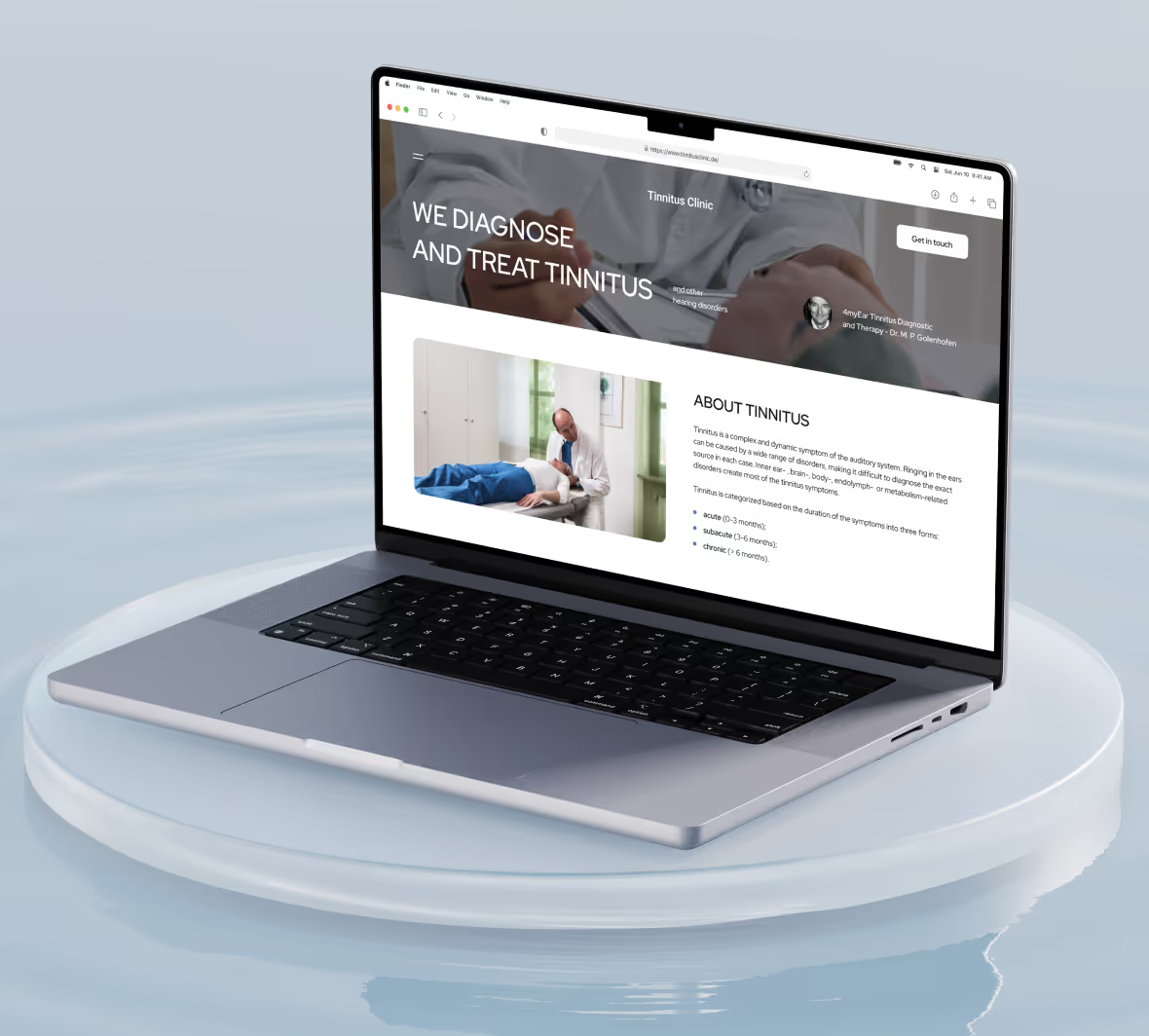
Launching a startup can feel like a race against time. You devise a great idea, and before you know it, the clock is ticking. You have to get to market before your idea loses its luster or someone beats you to it. That’s where time to market comes in. The quicker you can launch your minimum viable product (MVP), the faster you can get feedback on your product. For many entrepreneurs, the best way to enhance time to market is by using no-code development to create their MVP.
This guide will provide valuable insights into why reducing time to market is crucial to your success and how no-code MVPs can help you achieve your goals. If you're wondering how to get started, Minimum Code can help. The no-code development agency specializes in building no-code MVPs that enhance time to market, helping you get to market faster so you can reach your goals.

What Is Time To Market?
Time to Market (TTM) refers to the time it takes for a business to develop a new product or service and bring it to the marketplace. This metric measures the entire process, from the initial concept or idea to when the product becomes available for customers. TTM is a critical aspect of a business strategy, particularly for industries driven by innovation and rapidly evolving customer demands, such as technology, fashion, and consumer electronics.
With intense competition in most industries, TTM can significantly affect a company’s success. Products that reach customers faster can capitalize on emerging trends, meet immediate market demands, and establish a brand as an innovator or industry leader. Conversely, a longer TTM may lead to missed opportunities, allowing competitors to dominate emerging spaces or making products less relevant when released.
Understanding TTM involves tracking several phases: research and development (R&D), design and prototyping, testing, manufacturing or service setup, marketing, and distribution. Each phase plays a role in the speed and effectiveness of TTM, and bottlenecks at any stage can impact the overall time required to launch. Some companies optimize TTM through strategies like agile development, minimum viable product (MVP) launches, and streamlined testing to accelerate the process while ensuring product quality.
Benefits of Reducing Time to Market
Reducing Time to Market (TTM) can bring numerous advantages to a business, especially in competitive and fast-paced industries. By accelerating the process from concept to launch, companies can meet and often anticipate customer needs, setting themselves apart from competitors. Here are some core benefits of reducing TTM:
Competitive Advantage
Being first to market with a new product or service gives a business an edge. Customers often perceive the first available product as innovative, associating the brand with leadership in that space. This advantage can translate into brand loyalty and market share gains before competitors launch their alternatives.
Faster Revenue Generation
The quicker a product reaches the market, the sooner it can generate revenue. Speeding up TTM allows companies to see a return on investment (ROI) faster, a critical factor for startups and businesses with cash-flow-sensitive products. Adaptability to Trends: Trends can change rapidly, especially in sectors like fashion, technology, and consumer goods. Reducing TTM allows companies to adapt to or capitalize on trends before they cool off, making their offerings more relevant and appealing.
Increased Agility
When TTM is short, businesses can quickly iterate and respond to market feedback. This adaptability can enhance product development by incorporating real-time user feedback, leading to better customer-centric products and services.
Reduced Costs
Lengthy development cycles can be costly, with ongoing R&D, staffing, and resource requirements. Streamlining TTM reduces these prolonged expenses, allowing companies to allocate resources more efficiently. Faster TTM can also lower the risk of producing outdated products, thus minimizing losses due to slow-moving inventory or unsold products. Reducing TTM is about speed and maintaining quality, meeting customer expectations, and creating sustainable practices within an organization. It’s about strategically positioning the business to grow and innovate efficiently.
Related Reading
• MVP Features
• Develop MVP
• MVP Development Cost
• How to Build an MVP
• How to Determine Market Demand
• How to Launch a Startup
• How to Validate Your Business Idea
• MVP Benefits
• MVP Development for Startups
Common Challenges Associated with Time to Market

Resource Constraints: The Quickest Way to Slow Down Time to Market
Limited resources can severely impact a company’s ability to bring products to market quickly. Startups and small businesses may struggle with staffing shortages or a lack of specialized expertise, slowing development. Organizations need to balance the urgency of a quicker TTM with the capabilities and availability of their resources.
Inefficient Processes: The Hidden Enemy of Time to Market
Many companies operate with outdated or cumbersome processes that slow down development. For example, lengthy approval cycles, excessive documentation, or a lack of collaboration between departments can create bottlenecks. Streamlining these processes through better project management tools, adopting agile methodologies, or redefining workflows is essential to enhance efficiency and reduce TTM.
The Risk of Compromised Quality: A Dangerous Outcome of Reducing Time to Market
In the rush to launch a product quickly, there’s a risk of sacrificing quality. Skipping essential testing or quality assurance processes can lead to product failures, customer dissatisfaction, and damage to brand reputation. Organizations must ensure that speed does not come at the cost of delivering a reliable, high-quality product. This requires careful planning and the integration of quality checks at every stage of development.
Market Uncertainty: The Unforeseen Challenge of Quick Time to Market
Rapid changes in market conditions, customer preferences, or technological advancements can create uncertainty that complicates TTM efforts. A product that seems timely at the start of development may need to catch up when it is ready for launch. To mitigate this, businesses must engage in continuous market research, remain adaptable, and be prepared to pivot their strategies.
Interdepartmental Silos: The Silent Killer of Time to Market
Poor communication and collaboration between departments can hinder a company’s ability to execute a streamlined development process. When teams work in isolation, such as in product development, marketing, and sales, information gaps can occur, leading to misaligned goals and delayed timelines. Promoting cross-functional collaboration and establishing clear communication channels can help ensure that all departments are aligned toward the same objectives, thus facilitating a faster TTM.
Regulatory and Compliance Issues: The Necessary Evil Slowing Down Your Time to Market
Depending on the industry, businesses may face strict regulatory requirements that can slow down the development and launch processes. For example, healthcare, finance, or manufacturing companies must adhere to compliance standards that can lengthen the timeline for product development. Understanding these regulations early in the process and incorporating compliance into the initial development phases can help alleviate delays later.
Minimum Code: The Secret to Rapid Development
By recognizing and addressing these challenges, businesses can create a more effective strategy for reducing Time to Market while maintaining high quality and customer satisfaction. We are a no-code development agency tailored for non-technical entrepreneurs looking to launch B2B SaaS or service web apps quickly. Our expertise lies in using tools like Bubble.io, Xano.com, and Webflow to deliver MVPs within a month.
We offer rapid development speed, cost-effectiveness compared to traditional methods, scalable and secure solutions, and full-service support from design to post-launch. We're ideal for founders who've experienced lengthy traditional development cycles or need a technical co-founder. Our approach solves common pain points like needing more tech skills, no-code scalability, security concerns, and the desire to focus on business while we handle the tech.
With Minimum Code, you can finally bring your long-held business idea to life quickly and efficiently without breaking the bank. Bring your long-held business ideas to life with us, and get a free product discovery & scoping for your app idea today!

Strategies to Effectively Reduce Time to Market
Speed Up Product Development Using Agile and Lean Methodologies
Agile and Lean are project management frameworks prioritizing flexibility, collaboration, and efficiency. Agile methodologies, such as Scrum, enable teams to work in short sprints, allowing them to iterate and improve the product continuously based on feedback. Lean, on the other hand, focuses on minimizing waste and maximizing value by refining workflows. These approaches can help companies adapt quickly to changing market demands and deliver value more efficiently.
Build Cross-Functional Teams to Speed Up Time to Market
Creating teams that include members from various departments—such as R&D, marketing, and customer support—promotes collaboration and reduces the time spent on internal handoffs. Cross-functional teams work together from the early stages, ensuring the product aligns with all organizational goals and customer needs. This alignment also helps prevent miscommunication and redundancy, which can slow down TTM.
Use Advanced Project Management Tools
Leveraging digital project management tools like Trello, Asana, or Jira can significantly improve productivity by centralizing tasks, tracking progress, and setting clear deadlines. These tools facilitate real-time collaboration and help managers monitor timelines and allocate resources more effectively. Project management tools are vital in accelerating product development by streamlining communication and informing all team members.
Implement Automation and Digital Tools
Automation can streamline repetitive tasks in product development, quality testing, and deployment. For example, automated testing tools can help developers identify issues early in the process, while digital prototyping tools allow designers to refine concepts before they move into production. Automation reduces human error and saves time, enabling teams to focus on more complex, value-driven tasks that contribute directly to lowering TTM.
Conduct Continuous Market Research
Regular market analysis is essential for making informed decisions throughout the product lifecycle. Staying attuned to shifts in consumer demand, competitor activity, and industry trends can help businesses prioritize features and make timely adjustments to product development strategies. This ensures that the final product meets market needs without significant last-minute modifications.
Outsource to Reduce Time to Market
Partnering with third-party vendors or freelancers can offer access to specialized skills, such as software development or digital marketing, which may need to be more readily available within the team. Outsourcing can speed up certain phases of development, such as prototyping, testing, or manufacturing. However, working closely with external partners is crucial to maintain quality and alignment with the company’s goals.
Emphasize Product Minimum Viable Product (MVP) Development
Building a Minimum Viable Product (MVP) allows businesses to quickly launch a simplified product version with only the essential features. An MVP enables companies to test their product in the market, gather feedback, and make data-driven improvements for subsequent versions. This approach shortens TTM and helps ensure that the final product effectively meets customer expectations.
Incorporate Real-Time Feedback Loops
Continuously gathering user, employee, and stakeholder feedback is essential for a swift development process. Real-time feedback loops, facilitated by tools like surveys, user-testing platforms, and feedback analytics, provide insights into potential issues and opportunities for improvement. This iterative feedback allows businesses to address problems early and prevent delays in later stages of development.
Related Reading
• MVP Testing Methods
• MVP in Scrum
• MVP App Development
• Types of MVPs
• Lean Startup Validated Learning
• MVP in Agile
• Minimum Viable Product vs Prototype
• Minimum Viable Product Examples
Long-Term Impact of Reducing Time to Market on Business Growth
Increased Market Competitiveness
Reducing time to market helps businesses consistently stay ahead of competitors, positioning themselves as market leaders. Launching innovative products before competitors strengthens brand visibility and establishes a reputation for agility and responsiveness. Over time, this positioning becomes a competitive advantage, enabling a business to capture a larger market share.
Enhanced Customer Loyalty
Quick delivery of new products and improvements based on customer feedback can foster a loyal customer base. Customers who see that a brand regularly innovates and responds to their needs are likelier to stay committed to it, even in competitive markets. A faster time to market also enables businesses to adapt to trends promptly, keeping the brand relevant in customers’ minds.
Improved Revenue and Profitability
With faster product launches, businesses can generate revenue sooner and often achieve a quicker return on investment. Additionally, reducing time to market frequently leads to streamlined processes and lower operational costs, further boosting profitability. Over time, these savings allow for reinvestment in research and development, marketing, and scaling efforts, which drive sustained growth.
Better Resource Allocation
Efficiently managed time to market reduces unnecessary bottlenecks, freeing up resources and enabling companies to pursue more projects or improve existing products. This resource optimization is especially valuable for growing businesses that aim to maximize their output without expanding their budget. Over time, efficient resource use contributes to productivity and paves the way for scalability.
Sustained Innovation
A culture of quick, iterative product launches can transform a business into an innovation leader. Fast time to market encourages a mindset where teams constantly experiment, gather feedback, and improve, leading to a culture of ongoing learning and adaptation. This sustained innovation helps businesses respond to changing market demands and maintain a forward-looking brand image.
Increased Investor and Stakeholder Confidence
Delivering new products and updates promptly signals reliability and growth potential to investors and stakeholders. A reduced time to market demonstrates that a company has refined its processes and can capitalize on opportunities. This perception can increase investor interest, leading to potential funding opportunities and partnerships that support future growth.
Get a Free Product Discovery & Scoping for Your App Idea Today
Your startup’s time to market can make or break your business. Getting your MVP to users quickly allows you to collect crucial feedback that can shape your product into what your target audience truly wants. The faster you can get this feedback, the better. Why? Rapid iteration can help you avoid building a product that no one wants. Instead, you can quickly alter your MVP to satisfy user demands.
Bring your long-held business ideas to life with us. Get a free product discovery and scoping for your app idea today!
Related Reading
• No Code Agencies
• Creating an MVP
• MVP Development Team
• MVP Validation
• Launching an MVP
• MVP Tools
• Lean Startup MVP

Ready to build your product?







